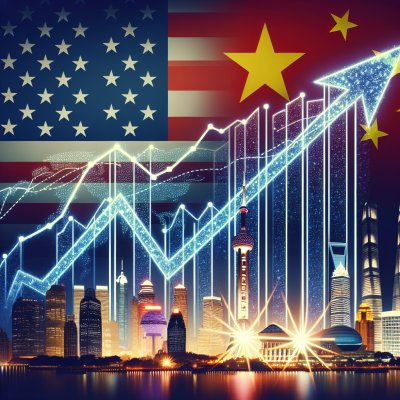
Asian Markets Show Mixed Trends Ahead of Key U.S.-China Trade Talks
As investors across the globe keep a close watch on geopolitical and economic developments, market movements in Asia on June 10, 2025, reflected cautious optimism. The focal point of investor attention continues to be the ongoing trade negotiations between the United States and China, which resumed in London early Tuesday morning.
Market Highlights: Regional Stock Performance
Despite underlying concerns from global macroeconomic factors, Asian markets managed to show a diverse performance with some indices in positive territory and others facing mild declines.
Japan: Nikkei 225 Struggles Amid Tech Losses
The Nikkei 225 in Japan fell slightly by 0.3%, closing lower as profit-taking hit tech firms and exporters. Investor sentiment remained cautious despite a weaker Japanese yen, which typically boosts corporates with strong overseas earnings. Leading the decline were shares of semiconductor companies that remain sensitive to the rhetoric and outcomes of U.S.-China relations.
China: Mainland Markets Stay Flat Ahead of Diplomatic Talks
China’s markets, particularly the Shanghai Composite and the Shenzhen Component, traded largely flat. Investors appear to be in wait-and-see mode as officials from Beijing and Washington meet for crucial negotiations. These talks are expected to address long-standing issues such as intellectual property, tariffs, and currency policy.
- The Shanghai Composite ended the session marginally up by 0.1%.
- The Shenzhen Component mirrored the tone, closing with a modest gain of 0.15%.
Hong Kong: Hang Seng Index Gains Amid Hopes of Improved Relations
In Hong Kong, the Hang Seng Index led regional gains with a rise of nearly 0.5%. Financial and property stocks helped buoy the index amid optimism that progress in U.S.-China discussions could lead to greater business confidence and cross-border trade opportunities.
South Korea: KOSPI Inches Higher Despite Geopolitical Pressures
South Korea’s benchmark KOSPI saw a modest increase of 0.2%, lifted by gains in the automotive and consumer electronics sectors. Samsung Electronics and Hyundai Motor were among the notable risers, benefiting from positive earnings forecasts.
Australia: ASX 200 Holds Steady as RBA Policy Outlook Remains Dovish
In Australia, the ASX 200 remained close to flat, posting a minor change of +0.05%. The Reserve Bank of Australia’s dovish stance, paired with soft inflation figures, allowed markets to maintain stability. Commodities, a major component of the Australian economy, faced pressure due to global uncertainty in demand.
Investor Focus: U.S.-China Trade Talks Resuming in London
A significant factor affecting risk appetite across Asia was the continuation of U.S.-China trade talks in London. After a long impasse, officials from both economic giants met in an attempt to de-escalate tensions that have left lasting impacts on global supply chains and market confidence.
The outcome of these talks could be pivotal for:
- Export-driven industries in Asia, particularly in technology and manufacturing.
- Investor sentiment regarding geopolitical stability and currency markets.
- Central bank policy actions in emerging Asian economies based on trade outlooks.
Currency Markets and Oil Prices
Currency fluctuations also played their part in today’s market activity.
- The Japanese yen traded weaker against the U.S. dollar, offering slight support to Japanese exporters.
- The Chinese yuan remained stable, with interventions by the People’s Bank of China keeping it in a tight range.
Meanwhile, oil prices were mixed in early Asia trading, shaped by Middle East tensions and inventory data from the U.S. Brent crude was up slightly by 0.3%, while West Texas Intermediate saw a minor dip.
Looking Ahead: Key Takeaways and Investor Strategy
As of now, market navigation largely revolves around developments coming out of London where the U.S.-China delegation continues its dialogue.
Key takeaways for investors:
- Watch for formal statements or press releases following the trade talks—these could result in swift market movements.
- Monitor currency stability and commodity prices, especially for trade-dependent economies.
- Maintain a diversified portfolio to hedge against unpredictable geopolitical risks.
Conclusion
Asia-Pacific markets traded on a cautious note on June 10, 2025, as investors balanced corporate fundamentals with broader geopolitical themes. With the U.S.-China trade talks in full swing, sentiment is fragile but hopeful. The upcoming sessions in London could set the tone for the second half of the trading year, potentially reshaping investment strategies across the globe.
Stay tuned for continued updates as the story unfolds and more clarity emerges from one of the most critical economic conversations of the year.


Leave a Reply